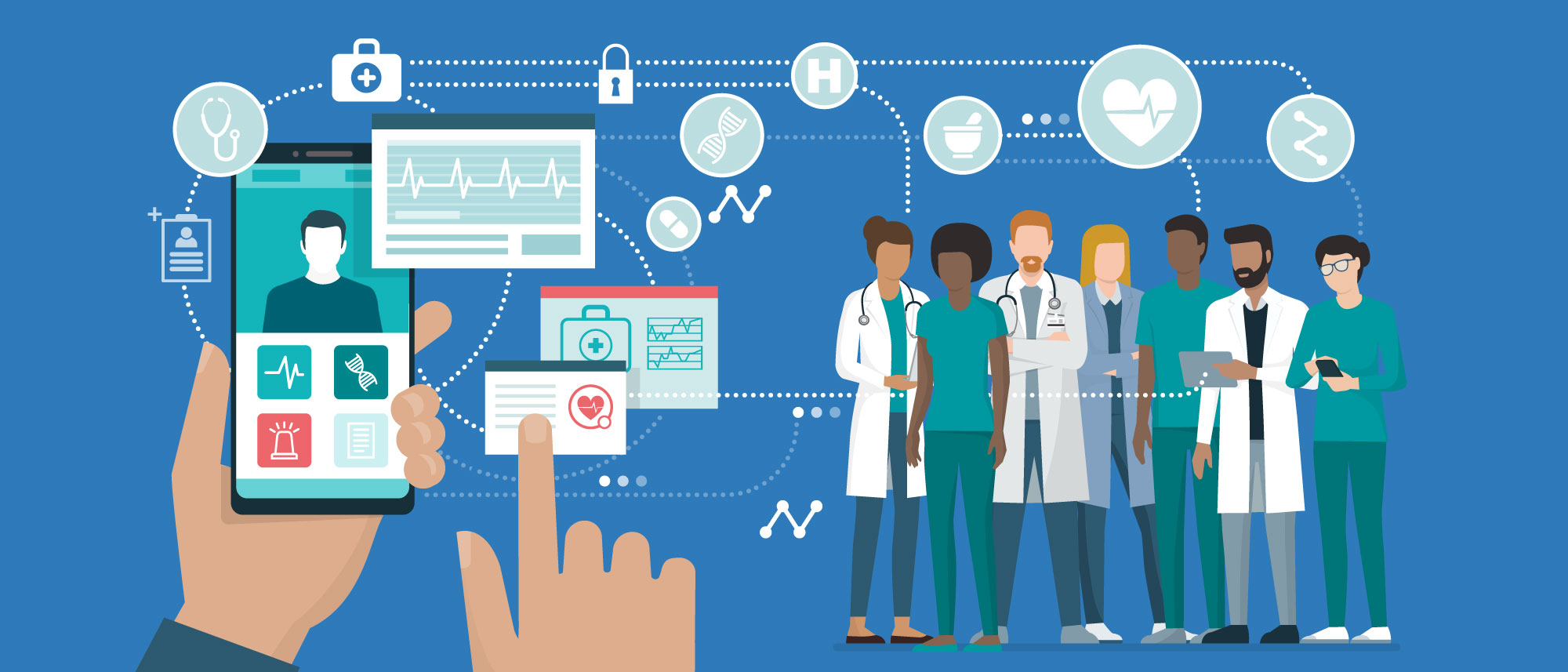Telemedicine (sometimes called telehealth) opens the way for your healthcare provider to provide your care without going to their office. It’s done primarily online via computer, tablet, or phone.
You can converse with your provider through video chat, or the phone. You can also send and receive messages using secure messaging, email, text, and secure file exchange. Remote monitoring is also possible using a data gathering device measuring vital signs like heart rate, blood pressure, O2 levels, diabetes measurements and much more.
Telemedicine Can Be Divided into Three Sectors
The first is provider-to-provider, where healthcare institutions and professionals provide remote consults to each other, enabling highly specialized care across a wide geographic area in time-critical care scenarios.
The second sector is remote patient monitoring, offering the possibility of managing conditions such as diabetes and hypertension in a conveniently proactive way. Today it’s used by millions of patients to keep their vital signs monitoring up to the minute.
The third segment, patient-to-provider, relies upon patients’ increasing comfort level with technology that makes their lives easier, which they now want to see extended to healthcare. We now expect to be able to make appointments, pay bills, and access their medical information online, as and when it suits us!
Patients can access a variety of specialized care through telemedicine. It’s especially helpful to monitor and improve ongoing health issues, such as medication changes or chronic health conditions. And its adoption expanded exponentially when in-person healthcare visits became either cumbersome or impossible at the height of the COVID-19 pandemic.
Common Types of Care:
-
Lab test or x-ray results
-
Mental health treatment, including online therapy, counseling, and medication management
-
Recurring conditions like migraines or urinary tract infections
-
Skin conditions
-
Prescription management
-
Urgent care issues like colds, coughs, and stomach aches
-
Post-surgical follow-up
-
Treatment and follow-up appointments for attention deficit disorder (ADD) and attention deficit hyperactivity disorder (ADHD)
-
Physical therapy and occupational therapy
-
Remote monitoring services that help you track your health goals and manage chronic conditions like diabetes, high blood pressure, and high cholesterol
Patients who use telemedicine like it, with video interactions typically getting 80 percent-plus approval ratings.
The Benefits
According to the US Department of Health and Human Services, the benefits of telemedicine are compelling:
-
Limited physical contact reduces everyone’s exposure to COVID-19
-
Virtual visits ensure you get health care wherever you are located – at home, at work or even in your car. You can’t beat the convenience!
-
Virtual visits cut down on travel, time off from work, and the need for childcare
-
Virtual health care tools can shorten the wait for an appointment
-
Increased access to specialists who are located far away from your hometown (particularly important given today’s critical shortage of primary care physicians)
The More We Use It, the Better It Serves Us
Telemedicine technology is not the issue here. While there is still work to be done on integrating various platforms, it’s consumer acceptance and adoption that will drive the development bus. Physicians, trained in a culture of person-to-person care, are overcoming early misgivings and embrace the convenience and cost reductions offered by telemedicine.
And, somewhere along the way, politicians will have to figure out the value of telemedicine and provide the legislative and regulatory framework that will allow it to fulfill its true potential to deliver high-quality, value-based care to people from all walks of life.






























Share this: